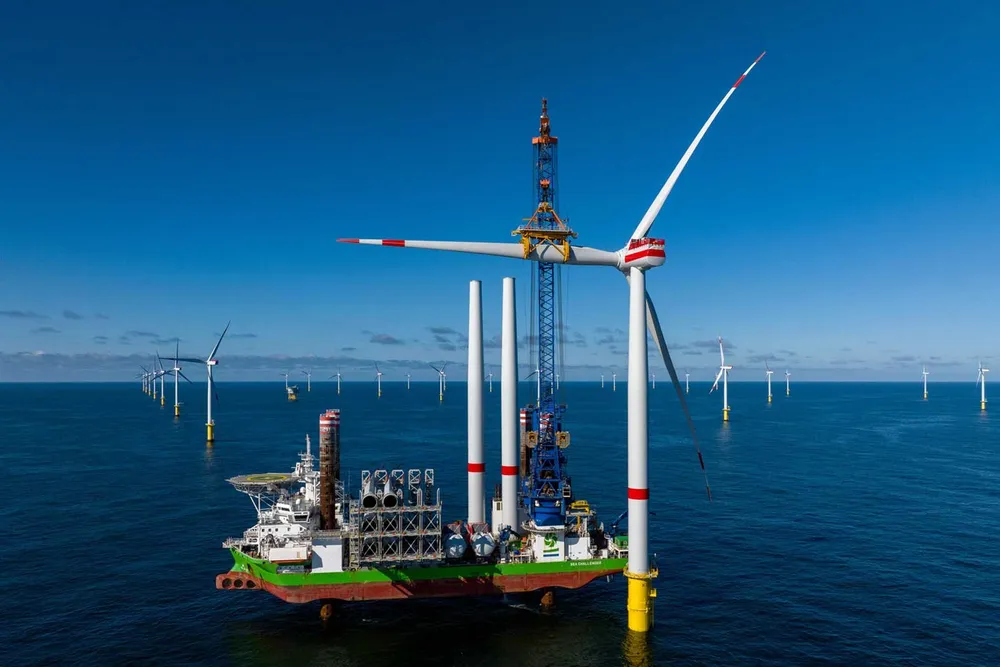Why forecasting offshore wind project costs is getting even harder
Costs for offshore wind projects have ‘skyrocketed’ and in an unpredictable manner, says finance expert at RenewableUK summit

Forecasting the costs for offshore wind projects – such as Orsted’s ill-fated Hornsea 4 array – is getting even more difficult according to industry experts, who cite several factors behind this.
The developer cited rising supply chain costs and interest rates in the period since the auction, as well as a change of strategy, when it hit the emergency stop button last month.
At RenewableUK’s Global Offshore Wind summit in London last week, panellists discussed why modelling these costs is getting more challenging.
Asha Patwari, senior finance associate at Ocean Winds, a joint venture between EDP Renewables and Engie, said that regulated controllable costs have “skyrocketed” in the last few years, “especially for projects which are based in Scotland” where there's an abundance of wind.
“The costs have gone up so much and unpredictably that it affects the projects negatively,” she said – noting the difficulty in predicting costs for projects with lifetimes sometimes in excess of 30 years.
For projects already built, this is “eroding the returns” available for investors, she said, and for future projects it’s eroding confidence in developing them.
Patwari singled out the effect of increasing network transmission costs as being a particular issue, adding that for projects in Scotland these are particularly “hefty”.
The UK’s National Energy System Operator (NESO) “generates the cost forecast for us,” said Patwari. “By their own admission,” she said these costs have been going up and are forecast to “worsen in future years.”
Offshore wind developers have “double transmission costs to pay,” she said – both connecting their projects to the land and then onshore.
Offshore wind transmission costs in particular have “gone up increasingly,” said Patwari.
“This is all managed by Ofgem,” she said, referring to Britain’s energy regulator. “Has it predominantly gone up because of interest rates? Maybe.”
Kunal Patel, partner at fellow offshore wind developer Copenhagen Infrastructure Partners, noted that the macroeconomic environment for the sector generally has been “very volatile” in recent years.
This has in no small part been due to war in Ukraine and the resulting energy crisis unleashed in Europe as the continent looked to quickly wean itself off Russian gas, which caused a sharp rise in inflation.
“If you combine that with supply chain constraints, it becomes much more difficult to figure out if you price your turbine supply at X, whether it's going to be X plus-minus 20, 30 percent,” said Patel.
“We've seen those sorts of swings over the course of months,” he added.
“Previously you could go to a bunch of suppliers, take three to five quotes in across each package and say, ‘Well, my cheapest quote is X.’ If you pick the cheapest quote across the various packages, a few years ago, you'd probably be right.
“You'd put that in a very hyper-competitive environment for CfD contracts, other forms of offtake. That was great for everyone, the consumer, not least.”
Today, however, “if you pick the cheapest quote you get across your packages, that's really not a good way of picking your P50 CapEx,” said Patel, referring to a financial estimate taken that there is at least a 50% chance that the project will be delivered on budget. “Because it will be higher than that.”
Patel stressed the importance of now being “more considered” when modelling construction prices.
Patwari added that there has been an increase in developers “multi-contracting to manage the sort of risk of one supplier increasing the price tremendously, or things going wrong.”
(Copyright)